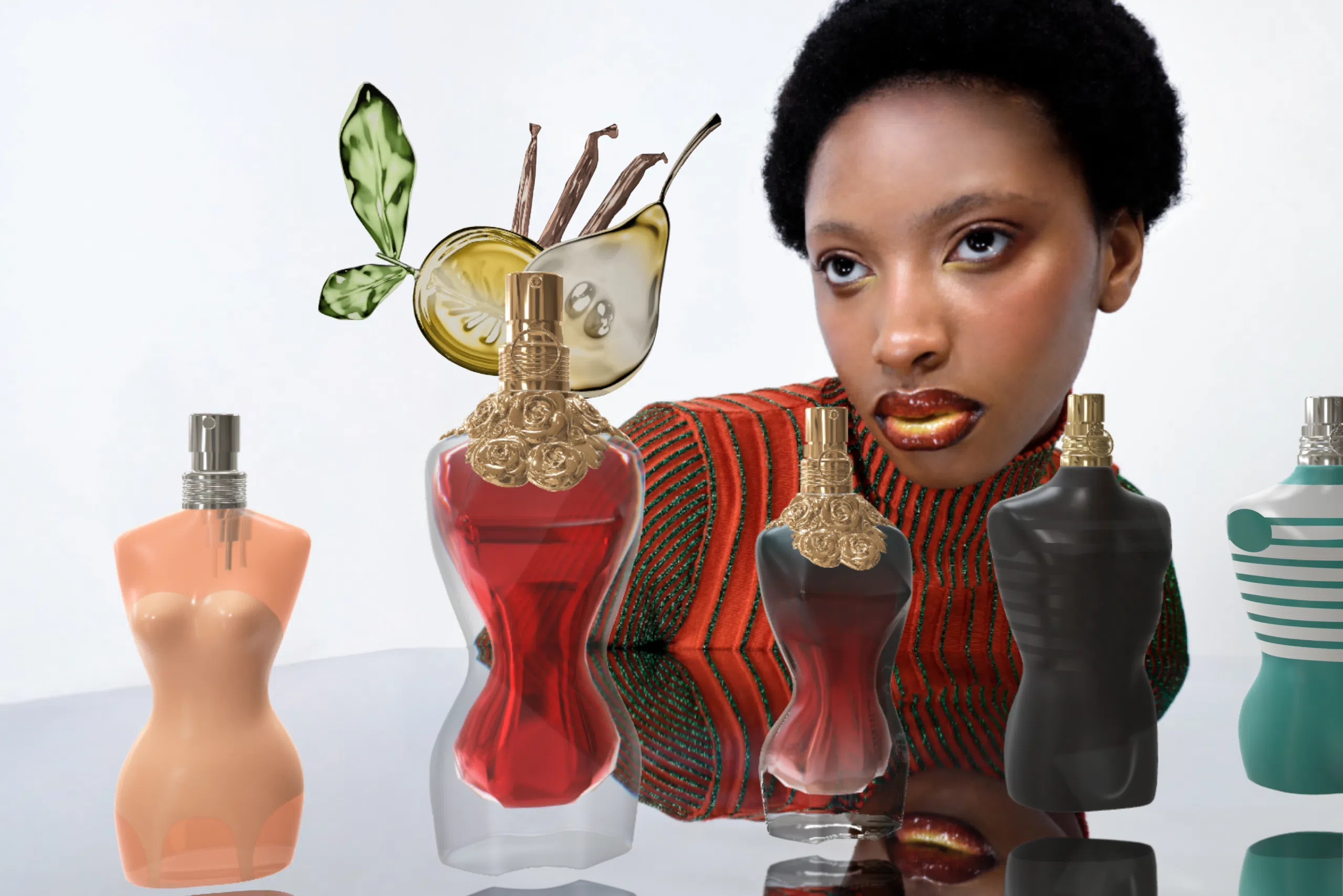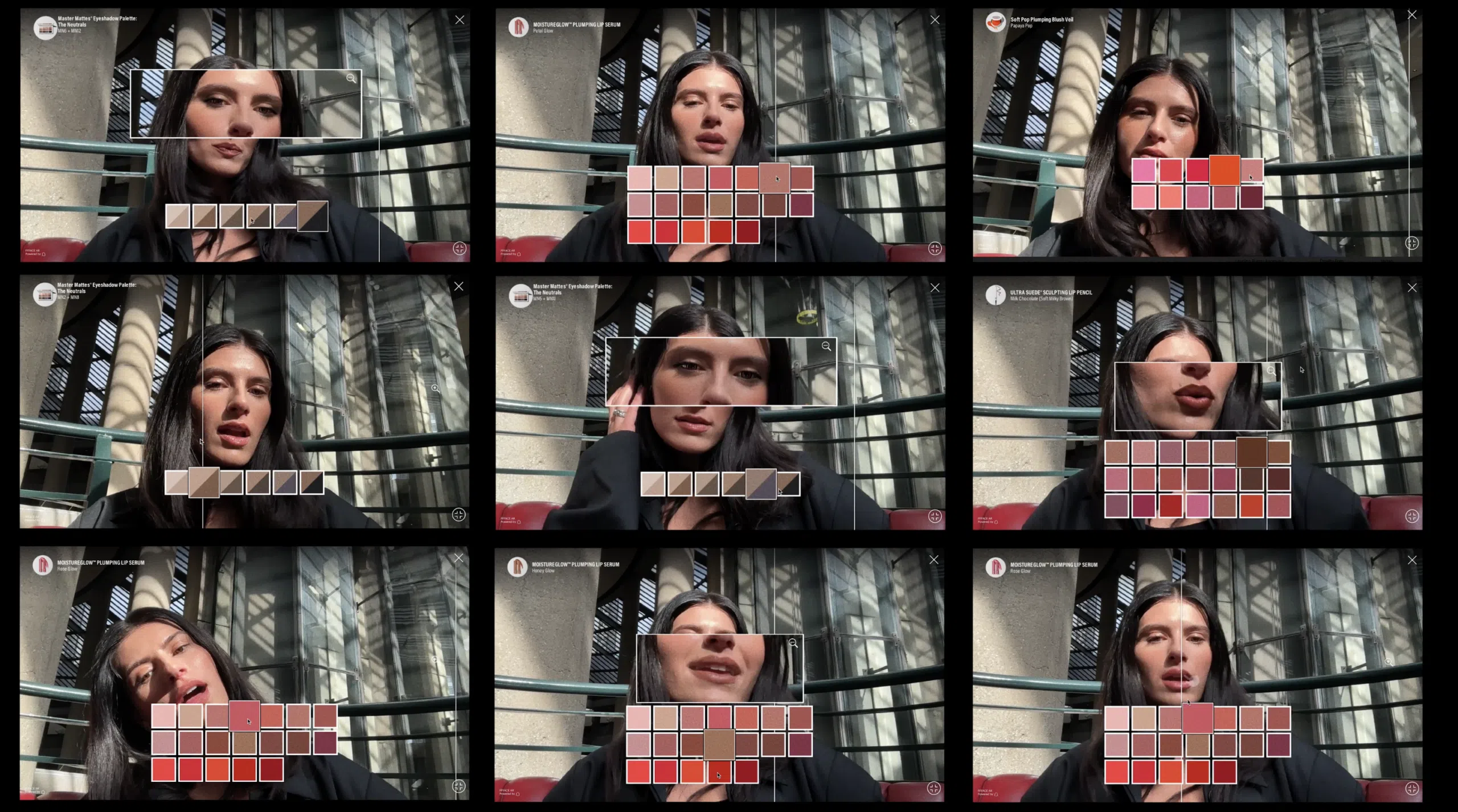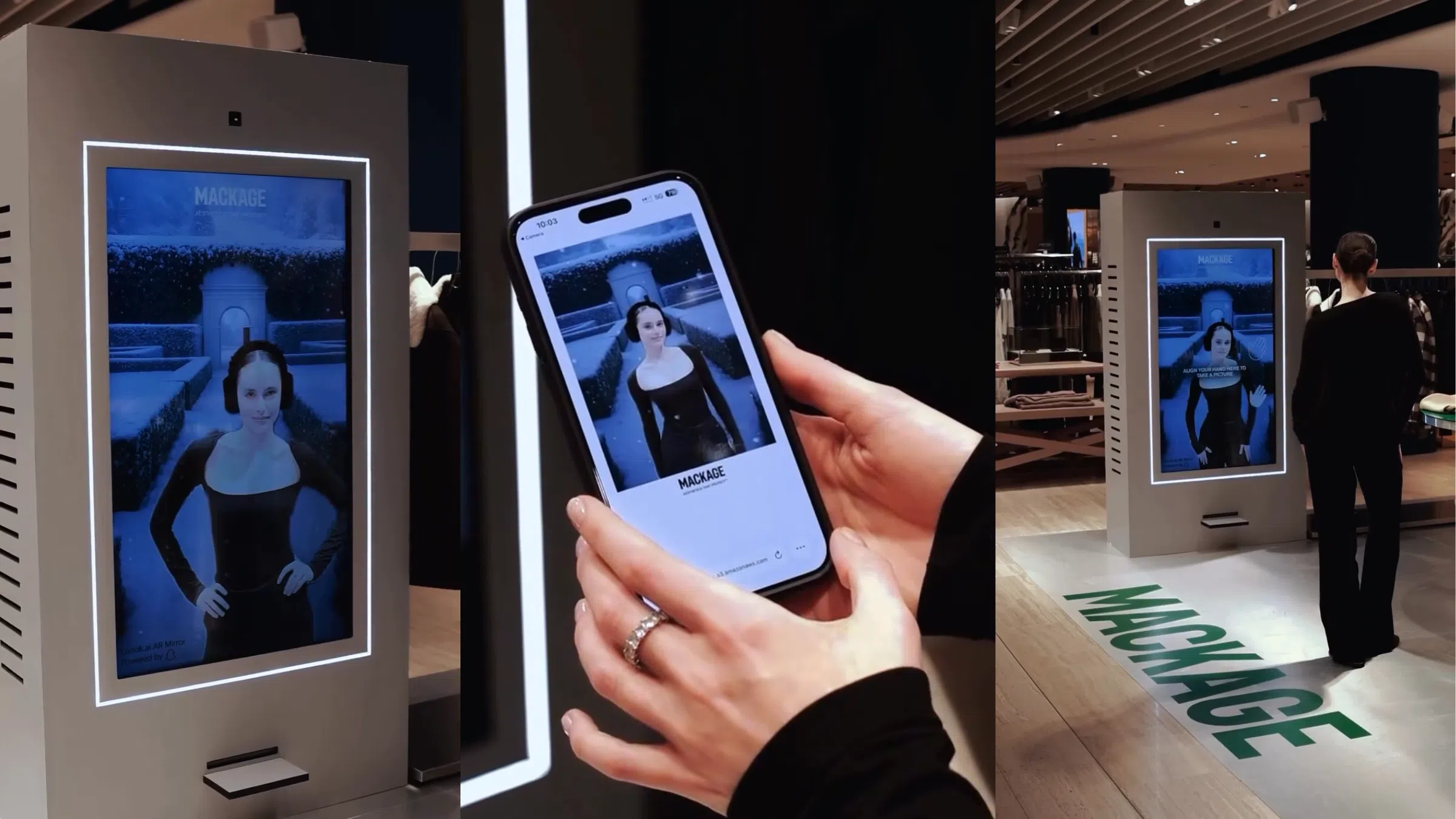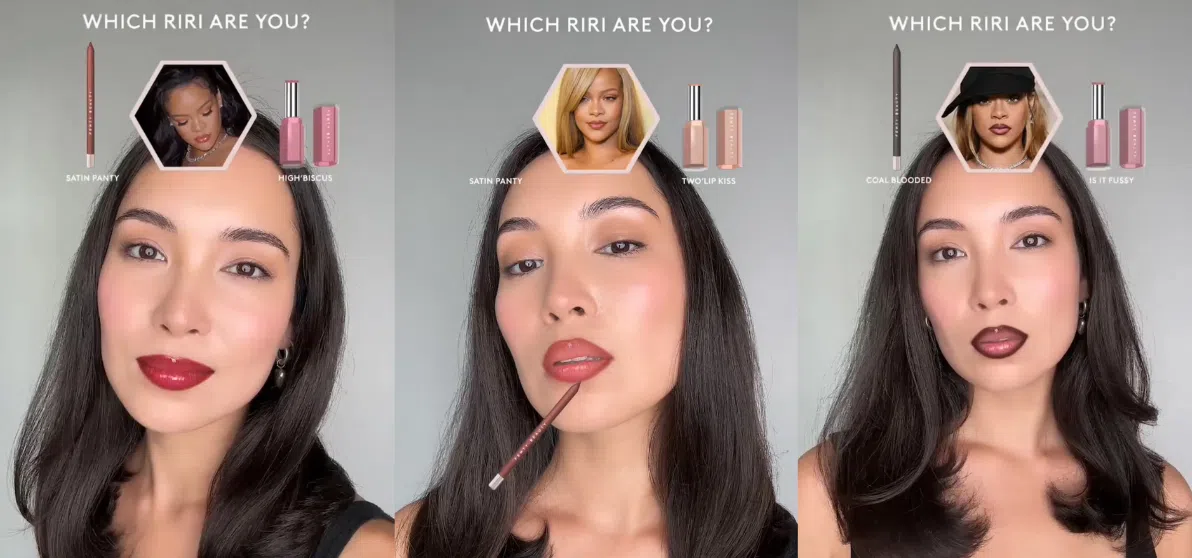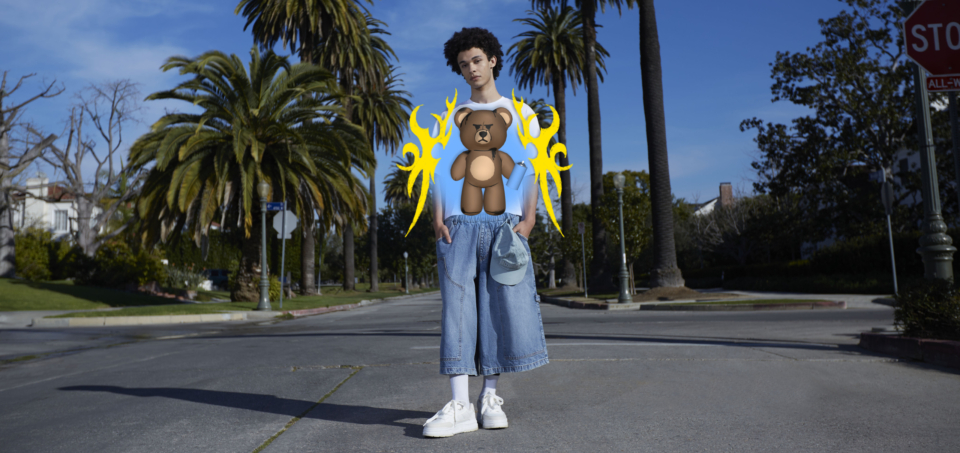Руководство по AR-маркетингу: использование дополненной реальности в вашей маркетинговой стратегии

AR-маркетинг: что это такое?
AR-маркетинг (маркетинг с использованием дополненной реальности) сочетает в себе цифровые технологии и реальный мир для создания увлекательных впечатлений от бренда. С помощью смартфонов и умных очков AR-маркетинг накладывает цифровой контент на реальную среду, позволяя брендам общаться с аудиторией в иммерсивной и интерактивной форме. Этот подход иллюстрирует новую тенденцию в маркетинге, известную как «фигитальный» (физический + цифровой), когда граница между реальным и виртуальным мирами становится все более размытой.
Роль технологии AR в маркетинговой стратегии
Многие люди рассматривают AR исключительно как технологию, но нам нужно смотреть на AR через призму конкретных продуктов, в которых она применяется. В настоящее время 99% ежедневного использования AR во всем мире приходится на AR-фильтры.
Люди должны думать об AR в первую очередь через призму ее применения в продуктах, главным образом AR-фильтров. Нам необходимо понимать, какую цель преследуют эти фильтры: в современном цифровом мире люди постоянно ищут интересный контент и цифровое подтверждение. Чтобы получить это подтверждение, им необходимо создавать контент.
Большинство людей хотят создавать интересный контент, но предпочитают не тратить на это слишком много усилий. AR-фильтры предоставляют шаблон для творческого контента — это быстрый способ создания контента, который обеспечивает желаемое цифровое взаимодействие.
Именно поэтому людям нужны эти фильтры, но они должны быть актуальны для конкретного времени и места. Когда бренды понимают эту динамику, они могут согласовать свои маркетинговые кампании с использованием AR с потребностями аудитории и добиться успеха.
Текущее состояние маркетинга с использованием AR
Когда пять лет назад появилась AR, на нее возлагались большие надежды в сфере маркетинга и коммуникаций. Однако ее внедрение не оправдало этих ранних прогнозов. Фильтры AR пользовались первоначальным успехом, но через несколько лет их популярность начала снижаться.
Ограниченное понимание AR маркетологами стало основным препятствием для его широкого внедрения. Многие не понимали, как инструменты AR могут повысить эффективность бренда или дополнить существующие маркетинговые каналы. В результате функции AR на таких платформах, как Snapchat, TikTok и Instagram, часто рассматривались как простые дополнения. Хотя некоторые кампании достигли замечательных результатов, успех оставался непостоянным. Сегодня AR-маркетинг продолжает развиваться по мере созревания технологии, хотя он все еще находится в экспериментальной фазе.
Будущее AR-маркетинга выглядит многообещающим, поскольку мы переходим к экосистеме смешанной реальности, основанной на умных очках, гарнитурах и носимых устройствах. На данный момент лучшие результаты дает фокус на пользовательском опыте.
Обзор AR-маркетинговых платформ
Ландшафт AR-платформ претерпел значительные изменения. После того как Meta закрыла свою платформу AR-фильтров MetaSpark, которая обеспечивала работу фильтров Instagram, фокус сместился с когда-то доминирующей позиции Instagram на Snapchat и TikTok. Каждая платформа имеет свои уникальные преимущества: TikTok лидирует по вирусной популярности и охвату аудитории, а Snapchat предлагает комплексный набор функций для различных приложений.
Возможности Snapchat выходят за рамки социальных фильтров — его Camera Kit SDK позволяет интегрировать AR в клиентские приложения, мобильные приложения и веб-сайты. Эта универсальность оказалась особенно ценной для брендов в сфере красоты и моды. После закрытия MetaSpark мы вступили в новую эру внедрения AR, и бренды начали исследовать новые возможности. Перспективы обнадеживающие, поскольку сферы применения AR расширяются по всем каналам. С помощью одного только Snapchat бренды теперь могут внедрять AR-технологии в социальных сетях, в Интернете, в приложениях и через физические AR-зеркала.
Типы маркетинговых опытов AR
Маркетинговые опыты AR можно условно разделить на два основных типа: расширение возможностей пользователя и расширение возможностей окружающей среды. Каждый тип предлагает уникальные возможности и задачи для маркетологов, стремящихся создать привлекательные брендовые опыты.
Расширение возможностей пользователя
Среди типов AR-опыта — на основе маркеров, без маркеров, на основе местоположения, а также распознавание и отслеживание объектов — наш пятилетний опыт показывает, что опыт, ориентированный на пользователя, особенно расширение возможностей лица и тела, обеспечивает наибольшую вовлеченность. Хотя такие приложения, как отслеживание полосы движения, размещение объектов в реальной среде и отслеживание целей для произведений искусства и одежды, демонстрируют потенциал, они страдают от технической сложности и отсутствия личной связи, которую ищут пользователи.
Расширение возможностей окружающей среды
Приложения AR для окружающей среды, вероятно, будут процветать после интеграции в экосистему смешанной реальности, доступ к которой осуществляется через умные очки, гарнитуры, линзы или чипы. Освободившись от зависимости от смартфонов, эти приложения могут получить более широкое распространение. Однако в настоящее время расширение возможностей пользователей остается наиболее эффективным подходом к AR-опыту.
Explore the Most Fascinating AR Filters by FFFACEКаковы преимущества AR-маркетинга для брендов?
Это сложный вопрос, на который пока нет исчерпывающего ответа. Не существует единого источника, который бы полностью объяснял, как эффективно применять этот маркетинговый инструмент. Вместо того чтобы искать универсальный подход, нам нужно изучить разнообразные варианты использования и контексты, чтобы понять, как может работать каждый AR-инструмент.
Рост онлайн- и офлайн-продаж
Для брендов, стремящихся усилить свое физическое присутствие в розничной торговле и стимулировать офлайн-продажи, AR-зеркала и AR-витрины оказались чрезвычайно эффективными инструментами для увеличения посещаемости физических магазинов. Эти установки привлекают внимание, стимулируют посещение магазинов и превращают посетителей в покупателей, соединяя цифровой и физический опыт розничной торговли.
Увеличение посещаемости
Еще один вариант использования для офлайн-розничной торговли касается брендов, представленных в мультибрендовых розничных средах, таких как Sephora. Здесь цель состоит не в том, чтобы привлечь посетителей в магазин, а в том, чтобы направить потребителей к полке с продукцией бренда. Добавление AR-зеркала или интеллектуального экрана для виртуальной примерки продукции на полке может привлечь внимание и создать эмоциональную связь с потребителями благодаря бесшовной инновационной технологии.
Персонализированные рекомендации по продуктам
Функционально это работает очень хорошо, позволяя клиентам виртуально примерить косметические продукты вместо их физического нанесения. Для продаж в электронной коммерции существует несколько вариантов использования. Веб-сайты косметических продуктов могут интегрировать функции виртуальной примерки WebAR, позволяя клиентам тестировать продукты удаленно и принимать более обоснованные решения о покупке. Однако ситуация значительно отличается для других отраслей, поскольку виртуальная примерка не применима к таким продуктам, как автомобили или потребительские товары, такие как продукты питания и напитки.
Повышение узнаваемости бренда
В TikTok фильтры зарекомендовали себя как мощные инструменты вирусного маркетинга, помогающие брендам значительно повысить свою видимость за счет органического обмена и взаимодействия. Когда фильтры находят отклик у пользователей, они могут генерировать миллионы просмотров на всей платформе, что приводит к значительному увеличению посещений профиля и росту числа подписчиков. Такое усиление присутствия в социальных сетях создает естественную воронку взаимодействия, которая превращает случайных зрителей в подписчиков и, в конечном итоге, в клиентов. Вирусный характер алгоритма TikTok означает, что хорошо разработанные фильтры могут достичь замечательного охвата с минимальными начальными инвестициями, что делает их особенно эффективными для повышения узнаваемости бренда и последующих продаж.
Аналитика AR-маркетинга
Точное измерение конверсии представляет собой сложную задачу, поскольку трудно отследить, сколько посещений профиля происходит именно благодаря AR-фильтрам. Snapchat предлагает уникальное преимущество, позволяя размещать прямые ссылки на веб-сайты в фильтрах, что дает возможность отслеживать посещения сайта и покупки продуктов из AR-опыта. Несмотря на эту мощную возможность, бренды не широко ее используют — возможно, из-за ограниченной осведомленности об этом инструменте или небольшой базы пользователей Snapchat.
В конечном итоге, вместо того, чтобы делать общие выводы о эффективности AR, мы должны оценивать каждый канал индивидуально, чтобы определить, как инструменты AR могут повысить вовлеченность аудитории и стимулировать результаты. При стратегическом внедрении бренды могут использовать AR для увеличения как онлайн-, так и офлайн-продаж.
Примеры использования AR-маркетинга
AR-маркетинг предлагает несколько ключевых вариантов использования с разным влиянием на эффективность. AR-зеркала в розничных магазинах эффективно привлекают посетителей и увеличивают офлайн-продажи. Функции виртуальной примерки, интегрированные в веб-сайты, стимулируют онлайн-продажи непосредственно на платформе. Интеграция AR в приложения брендов повышает эффективность электронной коммерции в мобильной среде. На социальных платформах фильтры TikTok отлично повышают узнаваемость бренда, а фильтры Snapchat могут как увеличить видимость бренда, так и генерировать прямые продажи.
- AR-зеркала — физические установки в розничных точках, витринах и на интеллектуальных экранах — привлекают посетителей, увеличивают объем офлайн-продаж, улучшают поиск товаров в магазине
- Социальные AR-фильтры — специфичные для платформы возможности в TikTok и Snapchat — TikTok: способствует вирусной популярности и узнаваемости бренда — Snapchat: позволяет осуществлять прямые конверсии через ссылки на веб-сайты
- Примерка с помощью веб-AR/мобильной AR – Интеграция в веб-сайты и приложения брендов – Позволяет удаленно пробовать продукты, стимулирует продажи в электронной коммерции, помогает при принятии решений о покупке
- AR-фотобудка – Интерактивные фотосессии на мероприятиях и в заведениях – Создает незабываемые впечатления с помощью развлекательного контента, стимулирует участие в мероприятиях
- AR-игры – Интерактивные брендированные игровые опыты – Повышает вовлеченность пользователей, увеличивает время, проведенное с брендом, повышает развлекательную ценность
Примеры маркетинговых кампаний с использованием AR в различных отраслях
Рассмотрим несколько конкретных примеров успешных маркетинговых кампаний с использованием AR.
Косметика
Рассмотрим различные отрасли и примеры, начиная с косметики. Зеркала с AR-технологией очень эффективны для привлечения внимания аудитории в офлайн-магазинах. Такой опыт можно реализовать в различных форматах — от больших зеркал с AR-технологией и витрин до небольших зеркал с AR-технологией на базе планшетов, подходящих для средних и небольших розничных магазинов.
Функции виртуальной примерки могут быть интегрированы в упаковку продукта с помощью QR-кодов или NFC-чипов, что позволяет клиентам легко протестировать продукты виртуально перед покупкой. Например, мы интегрировали виртуальную примерку в веб-сайт Makeup By Mario и установили AR-зеркала в зоне бренда Sephora. Обе реализации повысили эффективность бренда и объем продаж, что привело к продолжению масштабирования в этом году. Еще одна история успеха — наш фильтр TikTok для Fenty Beauty, который за один месяц сгенерировал более 120 000 TikTok-видео и более 100 миллионов органических просмотров — впечатляющий результат, учитывая стоимость фильтра. Это демонстрирует потенциал AR для достижения вирусной популярности в социальных сетях.
Для Fenty Beauty мы создали фильтр «Какая Рианна ты?» и разработали NFC-стикеры для красоты — уникальный цифровой продукт. Эти физические стикеры содержат NFC-чипы, которые активируют AR-фильтры и цифровые слои, по сути предоставляя предустановленные шаблоны для создания контента.
Этот подход особенно резонирует с поколением Z, которое активно создает контент. Это стратегический ход, поскольку эти продукты имеют высокую степень аффинности с поколением Z. Бренд использует этот продукт, чтобы привлечь молодую аудиторию и побудить ее изучить другие предложения бренда. Эти примеры демонстрируют универсальность приложений AR в сфере красоты: цифровые продукты, социальные AR-фильтры, виртуальные примерки на веб-сайтах и зеркала.
Развлечения
Развлекательные бренды, включая киностудии, стриминговые сервисы и музыкальные провайдеры, активно используют социальные сети в своей коммуникации. Фильтры TikTok особенно эффективны для создания вирусного контента. Давайте посмотрим на несколько недавних примеров из нашей работы.
Мы создали AR-фильтр для анонса нового альбома Rolling Stones и разработали фильтр для продвижения фильма «Дюна».
Фильтр «Дюна» сгенерировал сотни тысяч просмотров, поскольку позволял зрителям интегрироваться в трейлер фильма с помощью технологии Deepfake AR. Это вызвало большой резонанс у аудитории, потому что, когда люди смотрят новые фильмы, они естественно хотят поделиться своим опытом и мнениями. Становясь частью контента фильма, они получают органичный способ поделиться этими впечатлениями. Как в киноиндустрии, так и в музыкальной индустрии мы также используем важный компонент, основанный на событиях, где AR-зеркала помогают стимулировать вовлеченность.
Для этой индустрии особенно эффективны AR-фотобудки. Они позволяют людям фотографироваться с киногероями или музыкальными звездами, создавая незабываемые воспоминания об их развлекательных впечатлениях. Таким образом, маркетинг в сфере развлечений в основном опирается на два AR-инструмента: AR-зеркала и социальные фильтры.
Мода
В сфере моды мы имеем еще более широкий спектр вариантов использования AR: от развлекательных фильтров в TikTok или Snapchat, которые продвигают конкретные релизы или новинки, до виртуальных примерок одежды из новых коллекций. Эти виртуальные возможности можно масштабировать на онлайн-сайты и приложения брендов с помощью интеграции Snap Camera Kit. Кроме того, существует широкий спектр кроссплатформенных цифровых возможностей. В сфере одежды мы можем создавать так называемые полуцифровые предметы, предметы с поддержкой AR или цифровые предметы.
Ключевая инновация заключается в том, что физические предметы могут включать в себя дополненный цифровой слой, к которому потребители получают доступ через QR-коды на предметах одежды, чтобы запустить AR-фильтры. У нас есть доказательства того, что этот вариант использования стимулирует как онлайн-, так и офлайн-продажи. Сегодня это особенно актуально, поскольку мода — это не только внешний вид, но и то, как вы выглядите в Интернете и в контенте. Дополняя свои предметы одежды, вы можете создавать привлекательный онлайн-контент. Вы также можете реализовать AR-инсталляции офлайн, установив iPad перед полками с одеждой, чтобы отображать AR-слои для посетителей магазина.
Еще одним ключевым примером использования AR в моде являются AR-зеркала. У нас есть пример, когда AR-витрины за одну неделю сгенерировали почти 20 000 взаимодействий. AR-витрины привлекают посетителей в магазины, одновременно обеспечивая возможность беспрепятственного виртуального примерки, виртуальных примерочных и других инновационных форматов. Помимо AR, модные бренды имеют естественные возможности для интеграции в мир игр, создавая игровые версии своих товаров и продвигая свой бренд среди молодой аудитории, которая активно участвует в таких играх, как Fortnite или Roblox. Когда игроки носят в игре крутые брендовые вещи, они с большей вероятностью купят их в офлайн-магазинах из-за лояльности к бренду.
FMCG
Переходя к FMCG (быстрооборачиваемым потребительским товарам), основное внимание уделяется повышению осведомленности о новых продуктах и специальных предложениях. Основными инструментами являются креативные, забавные и развлекательные фильтры в социальных сетях, включая как стандартные фильтры, так и игровые. Например, игра может включать в себя сбор бутылок Coca-Cola в период Рождества для получения вознаграждений или использование AR-зеркал в офлайн-магазинах для повышения вовлеченности через пробники продуктов и продвижение новых продуктов. Кроме того, физические продукты могут включать AR через NFC-чипы или QR-коды на упаковке, что позволяет брендам предоставлять дополнительную информацию о продукте в развлекательном формате.
Эти функции также поощряют создание пользователями контента с их продуктами. Подводя итог, можно сказать, что успех FMCG в AR в первую очередь зависит от трех элементов: AR-фильтров в TikTok и Snapchat, AR-зеркал для офлайн-ритейла и цифровой упаковки продуктов.
Автомобилестроение
Наконец, в автомобилестроении наиболее популярным вариантом использования является демонстрация новых автомобилей с помощью AR с отслеживанием плоскости, когда автомобиль в натуральную величину появляется в окружении пользователя. Пользователи могут поворачивать автомобиль, осматривать салон и изучать его особенности, не находясь физически на месте. Другой вариант использования — дополнение автомобилей во время автосалонов или в выставочных залах с помощью больших дисплеев. Это работает как зеркало AR в обратном направлении — вместо отображения в сторону пользователей, оно проецирует изображение на автомобиль, добавляя цифровой слой дополненной реальности над автомобилем.
Когда клиенты получают свой автомобиль, они могут получить доступ к дополнительным наложениям, которые выделяют определенные функции их автомобиля.
Другие отрасли
Подводя итог, можно сказать, что AR — это инструмент, не зависящий от отрасли, и перечисленные нами отрасли — это не полный список тех, которые могут применять AR. Например, существуют различные успешные проекты для некоммерческих и социальных организаций. Наш фильтр для LGBTQ Tech USA получил очень высокую оценку и был удостоен награды. Мы также создали фильтры для One Tree Planted, CARE и десятков других социальных организаций. AR может также эффективно способствовать реализации правительственных инициатив.
Например, во время пандемии COVID вирусный фильтр пропагандировал ношение масок для спасения жизней. В Интернете можно найти множество других примеров. Ключевой вопрос заключается не в том, в какой отрасли вы работаете, а в том, каких целей вы хотите достичь и через какие каналы.
Как только это будет определено, можно будет выбрать и оценить соответствующий инструмент AR.
Лучшие практики AR-маркетинга
Давайте рассмотрим ключевые лучшие практики AR-маркетинга для создания эффективных кампаний. Эти основные принципы помогут максимально использовать потенциал AR в вашей маркетинговой стратегии, создавая увлекательные впечатления, которые привлекают вашу аудиторию.
AR — это инструмент коммуникации, а не волшебная палочка
Во-первых, AR — это не волшебное решение, а канал для эффективной передачи вашего сообщения. Чтобы максимально использовать его потенциал, мы должны обосновать его в соответствующем культурном контексте и сочетать с убедительными креативными идеями. Ваш подход должен сочетать сообщения о продукте и бренде с культурными элементами, которые связывают вас с целевой аудиторией в конкретное время и в конкретном месте. При создании AR-опыта избегайте отношения к нему как к традиционным рекламным форматам, таким как баннеры.
Сосредоточьтесь на инсайтах и культурном контексте в конкретном времени и месте
Мы должны рассматривать AR как инструмент для пользовательского контента, который дает потребителям возможность создавать и делиться.
При разработке креатива мы должны использовать интересы аудитории в качестве отправной точки. Формула работает следующим образом: мы анализируем инсайты и интересы нашей целевой аудитории, а затем создаем инструменты, которые помогают им производить увлекательный вирусный контент для своих социальных сетей. Взамен бренд получает узнаваемость и другие конверсии.
Чтобы получить ценность, мы должны сначала предоставить ценность через фильтр. Ключевые вопросы при оценке креативной идеи: актуален ли этот фильтр для нашей целевой аудитории? Позволит ли он нашей аудитории создавать контент, который привлекает их подписчиков?
Многоканальная интеграция
Важным компонентом AR-маркетинга является сочетание AR-инструментов с дополнительными маркетинговыми каналами. Давайте рассмотрим яркий пример, чтобы объяснить этот момент. Если вы запустите фильтр TikTok только в TikTok, вы охватите только аудиторию TikTok.
Но если вы поделитесь им через электронные новостные рассылки, распространите его через QR-коды в офлайн-режиме и интегрируете в рекламу на билбордах, вы получите гораздо большее вовлечение. Таким образом, офлайн усиливает онлайн, создавая экосистему, в которой все инструменты работают вместе без сбоев. Это два основных принципа: наличие релевантной креативной идеи и интеграция AR с другими инструментами для взаимного усиления.
Как искусственный интеллект и дополненная реальность развиваются вместе
Искусственный интеллект теперь органично интегрирован в мир дополненной реальности, улучшая опыт с творческой точки зрения и открывая новые возможности для трансформации пользователей. Эта интеграция привела к появлению AR-опыта, созданного с помощью искусственного интеллекта. Например, в Snapchat и TikTok можно создать AR-фильтр, просто введя текстовый запрос.
Хорошей аналогией является то, что AR служит витриной для пользовательского опыта, а ИИ функционирует как мозг, который помогает разрабатывать визуальные элементы. С точки зрения разработки, AR действует как фронт-энд, а ИИ — как бэк-энд. Эти технологии теперь глубоко взаимосвязаны, и вскоре каждый опыт AR будет каким-то образом включать компоненты ИИ.
Одним из интересных примеров использования является интеграция диалогового ИИ с распознаванием голоса в опыте AR, что позволяет пользователям взаимодействовать с фильтрами AR с помощью голоса.
Будь то телефон, AR-зеркало или другие AR-интерфейсы, пользователи могут напрямую разговаривать с фильтром. Фильтр понимает речь пользователя и добавляет объекты или визуальные элементы, которые представляют его ответ. Например, пользователь может сказать: «Можете ли вы порекомендовать косметические продукты, исходя из моей внешности, оттенка кожи, цвета волос и формы губ?» Затем фильтр предложит подходящие продукты, отобразит их упаковку и виртуально нанесет их.
Как бренды могут измерить ROI маркетинговых кампаний AR?
Чтобы измерить рентабельность инвестиций (ROI) в AR-маркетинг, бренды должны сначала установить четкие цели по конверсии продаж и построить комплексную воронку продаж. Им необходимо рассчитать, сколько товаров они должны продать, чтобы окупить свои инвестиции в AR-фильтры. Например, если бренд продает помаду по 10 долларов за штуку и создает фильтр за 10 000 долларов, ему необходимо продать не менее 1000 товаров в результате этой активации.
Это реалистичная цель, поскольку некоторые фильтры TikTok генерируют сотни тысяч единиц пользовательского контента (UGC). Такой объем UGC обычно приводит к сотням тысяч посещений профилей, что может привести к десяткам тысяч кликов по ссылкам и, в конечном итоге, к тысячам покупок. ROI можно измерить непосредственно через этот процесс конверсии.
Ключ к успеху — четко определить свои цели и иметь детальное представление о своей воронке продаж.
Советы брендам по созданию вирусных AR-кампаний
Чтобы создать вирусную AR-кампанию, бренды должны глубоко понимать контекст своей целевой аудитории и текущие тенденции. Ключ к успеху — определить наиболее релевантные, привлекательные и увлекательные призывы к действию для вашей конкретной аудитории в данный момент. Наш пример с LGBT Tech прекрасно иллюстрирует этот подход — мы поняли, что во время Месяца гордости люди будут заинтересованы в вопросах, связанных с Pride.
Мы также поняли, что представление ответов с помощью неожиданных эффектов макияжа найдет отклик у аудитории. Это создало опыт, который был актуален как по информационному содержанию, так и по визуальному представлению.
Как внедрить AR в вашу маркетинговую кампанию
Не существует универсального правила для применения маркетинговых инструментов в ваших коммуникациях, включая AR. Для некоторых брендов AR может быть совершенно неактуальным — так же, как маркетинг в социальных сетях, электронный маркетинг или PR могут не подходить другим. Ключ — начать с основ: что вы продаете? Каково ваше ценностное предложение? Кто ваша целевая аудитория?
Учтите цифровые и офлайн-привычки вашей аудитории. Какие точки взаимодействия вы можете добавить в свою маркетинговую экосистему? Если инструменты AR оказываются актуальными для вашей конкретной аудитории и этих точек взаимодействия, приступайте к изучению их текущего культурного контекста и тенденций. На этой основе разработайте креативные идеи, которые эффективно интегрируют посыл вашего бренда. Такой стратегический подход гарантирует, что внедрение AR будет соответствовать вашим общим маркетинговым целям.
Get Started with AR Marketing TodayГотовы преобразовать свою маркетинговую стратегию с помощью AR?
Независимо от того, работаете ли вы в сфере розничной торговли, развлечений, моды или в любой другой отрасли, AR предлагает инновационные способы привлечения клиентов и достижения результатов. Готовы узнать, как AR может преобразовать вашу маркетинговую стратегию? Свяжитесь с FFFACE.ME сегодня, чтобы получить консультацию и найти идеальные AR-решения для вашего бренда. Помните: успех в AR-маркетинге не заключается в следовании универсальной формуле — он заключается в создании релевантных, увлекательных впечатлений, которые резонируют с вашей конкретной аудиторией и при этом легко интегрируются в ваши существующие маркетинговые каналы.




